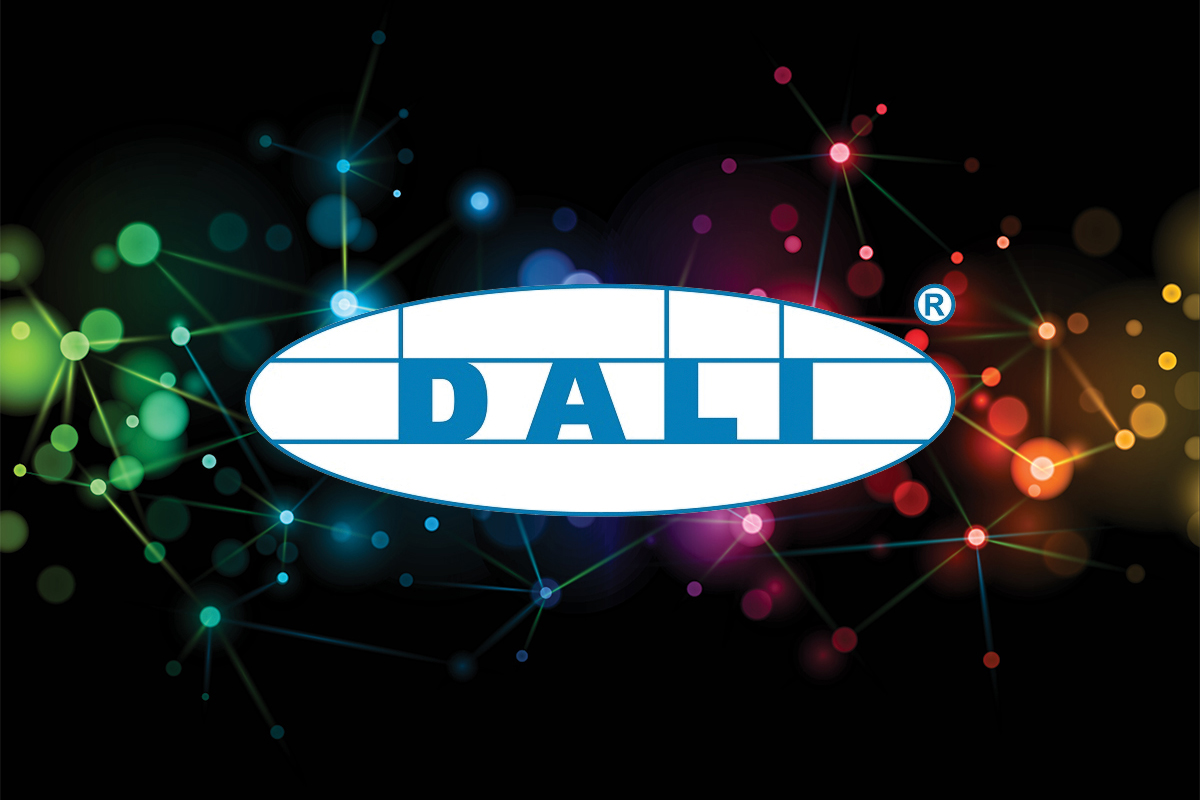Digital illumination
DALI, or Digital Addressable Lighting Interface, is a dedicated protocol that facilitates digital communication and control within lighting systems. DALI enables precise digital control over lighting devices, allowing for dimming, switching, and other advanced lighting functions with high accuracy. Each lighting fixture or control gear (e.g.,
LED drivers) is assigned a unique address, enabling individual control and management to allow for customized lighting scenes, zoning, and scheduling tailored to specific requirements. DALI allows devices to be programmed to operate in groups. This feature enhances flexibility, as lighting systems can be reconfigured through software without the need for rewiring. Different lighting functions and moods can be achieved in various areas of a building and adjusted as needed. DALI supports two-way communication between the control system and lighting devices. This enables feedback and status monitoring, allowing for real-time monitoring of energy consumption, device health, and other diagnostics. DALI lighting systems are flexible and scalable, allowing for easy reconfiguration and expansion as needed. Devices can be added, removed, or rearranged without the need for extensive rewiring or infrastructure changes. DALI is a standardized protocol supported by various manufacturers, ensuring interoperability between different brands and products. This allows for the creation of comprehensive lighting solutions using components from multiple vendors.
The synergy of DALI and LED lighting
DALI serves as a powerful tool for unlocking the full potential of LED lighting. The combination of DALI and LED lighting offers a robust solution for creating energy-efficient, flexible, and visually appealing lighting environments in residential, commercial, and industrial settings. DALI enables precise control and dimming of LED
lighting fixtures. It allows for individual addressing of each fixture, providing granular control over brightness levels and enabling dynamic adjustments to suit specific needs or preferences. This level of control ensures optimal lighting conditions while maximizing energy efficiency. DALI facilitates seamless integration of LED lighting fixtures into larger
lighting control systems. It allows LED fixtures to communicate with other DALI-compatible devices, such as sensors, switches, and controllers, creating a cohesive and interoperable lighting ecosystem. This integration enables centralized management, scheduling, and automation of LED lighting, enhancing overall efficiency and convenience. DALI supports scalability, allowing LED lighting systems to expand or adapt to changing requirements easily. Additional LED fixtures can be added to the DALI network without the need for significant modifications, simplifying installation and future upgrades. This scalability ensures that LED lighting systems can grow alongside evolving needs and technologies. DALI contributes to energy efficiency in LED lighting through advanced control features. It supports occupancy sensing, daylight harvesting, and scheduling, allowing LED fixtures to adjust their output based on occupancy patterns and available natural light. By dynamically optimizing lighting levels, DALI helps reduce energy consumption without compromising comfort or productivity. DALI enhances the reliability and maintenance of LED lighting systems. It provides real-time monitoring and diagnostics capabilities, allowing for proactive identification of issues such as lamp failures or wiring faults. This proactive approach minimizes downtime and maintenance costs, ensuring continuous operation and maximizing the lifespan of LED fixtures.
Empowering creativity: achieving sophisticated LED solutions with DALI
DALI empowers designers and users to achieve more sophisticated and tailored LED lighting solutions, enhancing both functionality and aesthetics in diverse contexts. DALI enables precise adjustment of the color output of LED lights, offering a diverse range of color options to suit various applications and preferences. Whether creating dynamic lighting effects or setting the ambiance for different environments, color tuning adds versatility and creativity to lighting design. DALI facilitates the adjustment of the
color temperature of LED lights, from warm to cool tones, to accommodate different environments, activities, or user preferences. This capability allows for the creation of lighting environments tailored to specific needs, whether it's providing warm, cozy lighting for relaxation or cool, energizing lighting for productivity. By aligning the color temperature of artificial lighting with the natural progression of daylight, DALI-controlled LED lights can deliver
human-centric lighting to support the body's circadian rhythms. This synchronization helps regulate sleep-wake cycles, promote alertness during the day, and enhance relaxation in the evening, contributing to improved overall well-being and productivity. With DALI, users can program and recall multiple lighting scenes or configurations, providing flexibility, convenience, seamless transitions, and enhanced comfort and functionality in lighting control. This capability allows for effortless adjustments to suit different settings, moods, or activities, contributing to a more enjoyable and optimized lighting environment.
Across the spectrum: DALI's applications in varied settings
DALI's capabilities find applications in a variety of settings. DALI is commonly used in commercial buildings such as offices, retail stores, and restaurants. It enables precise control over lighting levels, allowing for energy-efficient operation and customization of lighting scenes to match different activities and atmospheres. In office settings, for example, DALI can adjust lighting based on occupancy, daylight availability, and time of day to optimize comfort and productivity. In hotels, restaurants, bars, and theaters, DALI enables dynamic lighting effects, scene transitions, and mood lighting to enhance the guest experience. Lighting scenes can be programmed to create different atmospheres for dining, socializing, or entertainment, contributing to a memorable and immersive environment. In healthcare settings such as hospitals, clinics, and nursing homes,
tunable white lighting controlled by DALI can mimic natural daylight patterns, helping to regulate patients' circadian rhythms and improve sleep quality. DALI is used in schools, colleges, and universities to create optimal learning environments. Lighting scenes can be tailored to different classroom activities, such as lectures, group discussions, or multimedia presentations. DALI extends its applications to public spaces such as libraries, museums, transportation hubs, and
outdoor lighting installations. In these settings, DALI enables efficient management of lighting resources, enhances safety and security, and contributes to the aesthetic appeal of the surroundings. In industrial and manufacturing environments, DALI supports task lighting, process optimization, and energy management initiatives. DALI-controlled lighting systems can be integrated with industrial automation systems to synchronize lighting with production schedules, occupancy patterns, and workflow requirements. DALI is increasingly being adopted in residential settings, where it offers homeowners greater control and flexibility over their lighting environments. From adjusting lighting scenes for entertaining guests to creating a relaxing ambiance for unwinding in the evening, DALI allows for personalized lighting experiences tailored to individual preferences and lifestyles.
Navigating DALI communication parameters
DALI uses only two wires for communication, typically a positive wire (DALI +) and a negative wire (DALI -). The nominal voltage range for DALI operation is between 0 volts and 20.5 volts. The absolute maximum voltage range extends from -6.5 volts to 22.5 volts. The Manchester (bi-phase) coding coding scheme is used for transmitting data over the DALI bus. It requires two-bit transitions for each logical data bit. A logical level of "1" represents a low-high signal sequence (rising-edge transition), typically falling between 9.5 volts and 20.5 volts. A logical level of "0" represents a high-low signal sequence (falling-edge transition), typically falling between 0 volts and 4.5 volts. When the DALI lines are shorted together to create a logical level of "0", the interface voltage of a control gear falls within the range of +6.5 volts and -6.5 volts. A maximum voltage drop of 2 volts is allowed across the DALI bus. The maximum current allowed on the DALI bus is 250 milliamps (mA). The current consumption of each DALI unit is capped at 2 mA. The maximum cabling distance for DALI should not exceed 300 meters (984 feet). 1.5 mm² (15 AWG) cables are recommended for data transmission in DALI systems. Control wiring and power feed can run together through a 5-wire cable or in the same conduit. Bus wiring is polarity independent and does not require termination resistors.
Network architecture and capacity
DALI's network architecture enables precise control over lighting systems by allowing up to 64 control gears to be individually addressed and managed within a single DALI bus, subnet, or loop. In DALI, a control gear refers to an electronic device responsible for regulating the electrical power supplied to a connected light source. This can include various devices such as
LED drivers, fluorescent ballasts, electronic transformers, emergency inverters, switching devices, or color controllers. Each control gear in a DALI network is assigned a unique short address, which is a numeric identifier ranging from 0 to 63. This address allows for individual control and communication with each device on the DALI bus. The DALI-2 standard expands the capabilities of DALI by standardizing control devices and allocating an additional 64 addresses for them. Control devices include application controllers (like routers and
gateways) and input devices (such as push buttons, rotary controls, sliders,
occupancy sensors, and light sensors). With DALI-2, a total of 128 addresses can be managed per subnet. This includes 64 addresses for control gears and 64 addresses for control devices. The 64 control-gear addresses can be organized into up to 16 groups, with each address assignable to any of these groups. This allows for convenient group control of multiple devices simultaneously. Each control gear can store and recall up to 16 different light scenes in its memory. These scenes can be programmed and triggered individually with a single command, enabling customized lighting configurations. Up to 32 groups can be configured for control devices, and each device can be assigned to any or all of these groups, allowing for flexible control options. Each control-device address has at least one instance and can support up to a maximum of 32 instances. An instance refers to an input element of an integrated input unit, providing granularity in control and customization.
Commands and scenes
In DALI systems, commands and scenes play essential roles in controlling and managing the lighting environment efficiently. DALI commands can be addressed to individual lighting devices, allowing precise control over each luminaire or fixture in the system. This means that specific instructions, such as turning a particular light on or off, adjusting its brightness, or changing its color temperature, can be sent directly to a specific DALI address. DALI commands can also be addressed to groups of devices, enabling simultaneous control of multiple lights that share common characteristics or functionalities. For example, lights in the same room or area can be grouped together to facilitate coordinated control, such as dimming all the lights in a conference room or changing the color of all accent lights in a
retail display. Additionally, DALI commands can be broadcasted to all devices in the system simultaneously. This allows for system-wide actions or announcements, such as turning off all lights at the end of the day or activating an
emergency lighting mode in response to a safety event. Broadcasting commands streamline communication and ensure consistent behavior across the entire DALI network. Scenes in DALI systems refer to predefined lighting configurations or settings that can be recalled instantly with a single command. Each scene corresponds to a specific combination of light levels, colors, and effects programmed by the user. Scenes allow for fast and efficient recall of desired lighting states across the entire DALI system. Instead of individually adjusting each luminaire to achieve a desired lighting scene, users can simply activate the corresponding scene command, triggering all relevant lights to adjust simultaneously to their predefined levels. DALI scenes provide flexibility for adapting the lighting environment to different activities, events, or preferences. Users can create and store multiple scenes for various scenarios, such as "meeting," "presentation," "dining," or "night mode," and easily switch between them as needed. This flexibility enhances user experience and convenience in controlling the lighting environment.
DALI dimming
DALI is indeed primarily designed for dimming, offering a standardized and precise method of controlling the light output of individual fixtures or groups of fixtures within a lighting system. This standardization enables interoperability and simplifies the integration of various lighting components within a DALI network. DALI ensures accurate and repeatable control of light output by utilizing digital communication between the control device (e.g., DALI controller or sensor) and the DALI-compliant light fixtures. This digital communication allows for precise adjustments to the light level, ensuring consistency and reliability in dimming performance. Certified DALI-2 control gear follows a standardized dimming curve, which defines the relationship between the control signal sent by the DALI controller and the resulting light output from the fixtures. This dimming curve is designed to match the sensitivity and perception of the human eye to changes in brightness, providing smooth and uniform dimming across the entire dimming range. The dimming curve used in DALI is carefully designed to take into account the non-linear sensitivity of the human eye to changes in brightness. This means that DALI dimming control is optimized to deliver gradual and perceptually uniform changes in light output, enhancing user comfort and visual experience.
Color types
DALI supports various methods, referred to as "color types," for controlling the color output of light sources. These color types offer flexibility in adjusting the color temperature, hue, saturation, and other color parameters of LED luminaires or fixtures within a DALI-controlled lighting system. Color type Tc (Tunable White) enables control of the correlated color temperature (CCT) along the black-body line, ranging from warm white to cool white. By adjusting the CCT, users can create lighting scenes that mimic natural daylight variations or cater to specific ambiance preferences. For instance, warmer temperatures may be preferred for relaxation areas, while cooler temperatures may be suitable for task-oriented spaces. Color type RGBWAF allows for the straightforward control of up to 6 channels of color, including Red, Green, Blue, White, Amber, and Free-color. With RGBWAF control, users have the flexibility to produce a wide range of colors and color combinations, enabling dynamic and creative lighting effects suitable for architectural, decorative, and entertainment applications. Color type xy coordinate, also known as xy chromaticity, facilitates precise and repeatable selection of color coordinates from the CIE color space chromaticity diagram (1931). By specifying the xy coordinates, users can precisely control the color output of light sources, ensuring consistent and accurate
color reproduction across different fixtures and lighting scenes. This method is particularly useful for applications requiring precise color matching or color consistency, such as retail displays, art galleries, and
architectural lighting.
DALI data
The DALI data specifications empower LED drivers to transmit a comprehensive array of data, facilitating real-time monitoring of performance, advanced asset management, diagnostics, energy metering, and various other applications. The bi-directional communication capability enhances the intelligence and functionality of DALI-controlled lighting systems, enabling configuration changes, status updates, and control commands to be transmitted between the DALI controller and individual fixtures or groups of fixtures in real-time. DALI-enabled LED drivers can continuously transmit data regarding their operational status, including current light output levels, temperature, voltage, and current consumption. This data enables real-time monitoring of the performance of individual fixtures or groups of fixtures within a DALI-controlled lighting system. DALI data specifications allow for detailed asset management by providing information about each connected device, such as its unique DALI address, manufacturer details, model number, installation date, and maintenance history. This data enables facility managers to track and manage lighting assets more effectively, optimizing maintenance schedules and resource allocation. DALI-enabled LED drivers can transmit diagnostic data to identify and troubleshoot potential issues within the lighting system. This includes detecting faults such as lamp failures, wiring faults, overheating, or communication errors, enabling proactive maintenance and minimizing downtime. DALI supports energy metering functionality by allowing LED drivers to report energy consumption data, including total energy usage, power consumption trends, and demand patterns. This information enables energy managers to monitor energy usage, identify inefficiencies, and implement strategies to optimize energy consumption and reduce operating costs.
Wireless solutions for DALI
The DALI protocol traditionally operates over wired connections, but recognizing the growing demand for wireless solutions, particularly in
IoT applications, the DALI Alliance has developed two approaches to address this need. The DALI Alliance has standardized gateways that bridge between the DALI protocol and popular wireless standards such as
Bluetooth Mesh and
Zigbee. These gateways enable communication between DALI-compliant devices and wireless networks, allowing for the integration of DALI lighting systems into broader
IoT ecosystems without the need for extensive rewiring. This approach leverages the benefits of wireless connectivity, such as cost savings, flexibility, and ease of deployment, while still retaining compatibility with existing DALI installations. In addition to gateways, the DALI Alliance has defined a specification called DALI+ for wireless and IP-based DALI communication. DALI+ serves as an alternative to traditional wired DALI connections, offering wireless connectivity for DALI-compliant devices. With DALI+, lighting fixtures, controls, and sensors can communicate wirelessly over IP networks, eliminating the need for physical wiring and enabling greater flexibility in device placement and system configuration. This approach provides an integrated solution for
wireless DALI installations, expanding the reach and applicability of DALI technology in diverse environments. DALI+ systems support a wide range of control gear and devices, including LED drivers, color-controllable drivers,
emergency drivers, application controllers, push-buttons, and sensors. This compatibility ensures that different types of lighting fixtures and control devices can be seamlessly integrated into the DALI+ system. DALI+ systems are designed to work with existing wired systems and designs. The DALI commands and features remain the same, allowing for consistency and interoperability with legacy DALI wired systems. A DALI+ bridge facilitates communication between application controllers in the DALI+ system and devices in a DALI wired system, enabling control, configuration, and querying of devices across both systems. DALI+ application controllers can support multiple subnets, which may include a combination of DALI+ and wired DALI subnets.
Emergency lighting
DALI allows for the centralized and integrated control of both emergency lighting and general lighting systems. This means that lighting fixtures designated for emergency use, such as
exit signs and
emergency lights, can be seamlessly integrated into the DALI network alongside regular lighting fixtures. The digital nature of DALI protocol offers advanced control capabilities for
emergency lighting systems. Emergency luminaires and exit signs equipped with DALI interfaces can communicate digitally with DALI-compatible control devices, such as switches, sensors, or building automation systems. This enables features such as remote monitoring, self-testing, and status reporting, facilitating proactive maintenance and ensuring compliance with regulatory requirements. DALI-2 Emergency extends the interoperability of lighting-control devices by providing standardized communication protocols and data formats. This ensures that DALI-2 Emergency-compliant emergency luminaires, exit signs, and other emergency lighting fixtures can seamlessly communicate and interact with other DALI-2 devices, such as sensors, switches, and controllers, within the lighting control system. DALI-2 Emergency facilitates integration with building management systems (BMS) by providing standardized communication interfaces and protocols. BMS platforms can access DALI control and querying capabilities to monitor and control emergency lighting systems remotely. DALI-2 Emergency allows building management systems to access DALI control and querying capabilities for emergency lighting systems. This includes functionalities such as automated testing, status reporting, and fault detection. DALI-2 Emergency supports automated testing and reporting of emergency lighting systems, which is a critical requirement for compliance with safety standards and regulations.












































